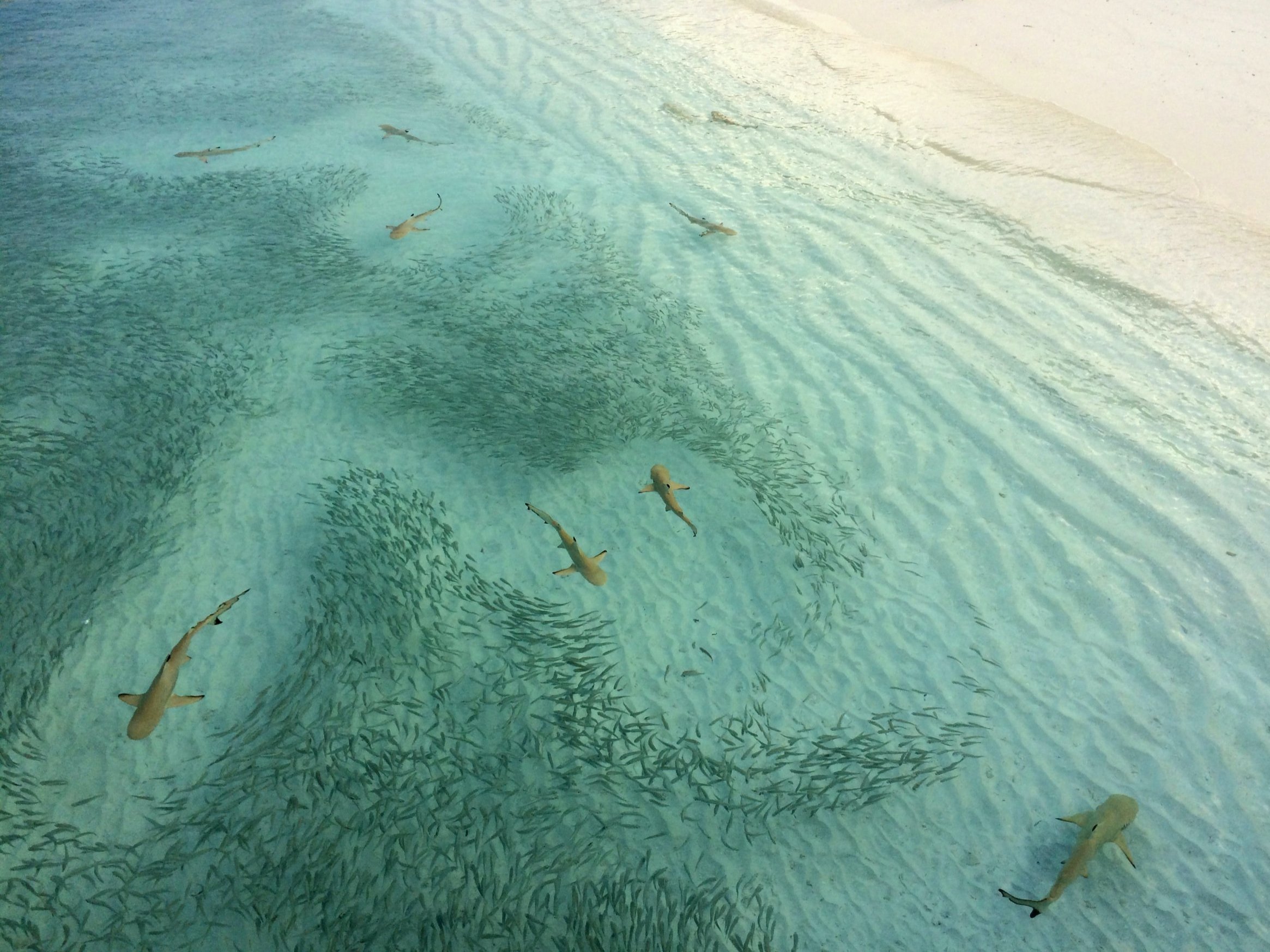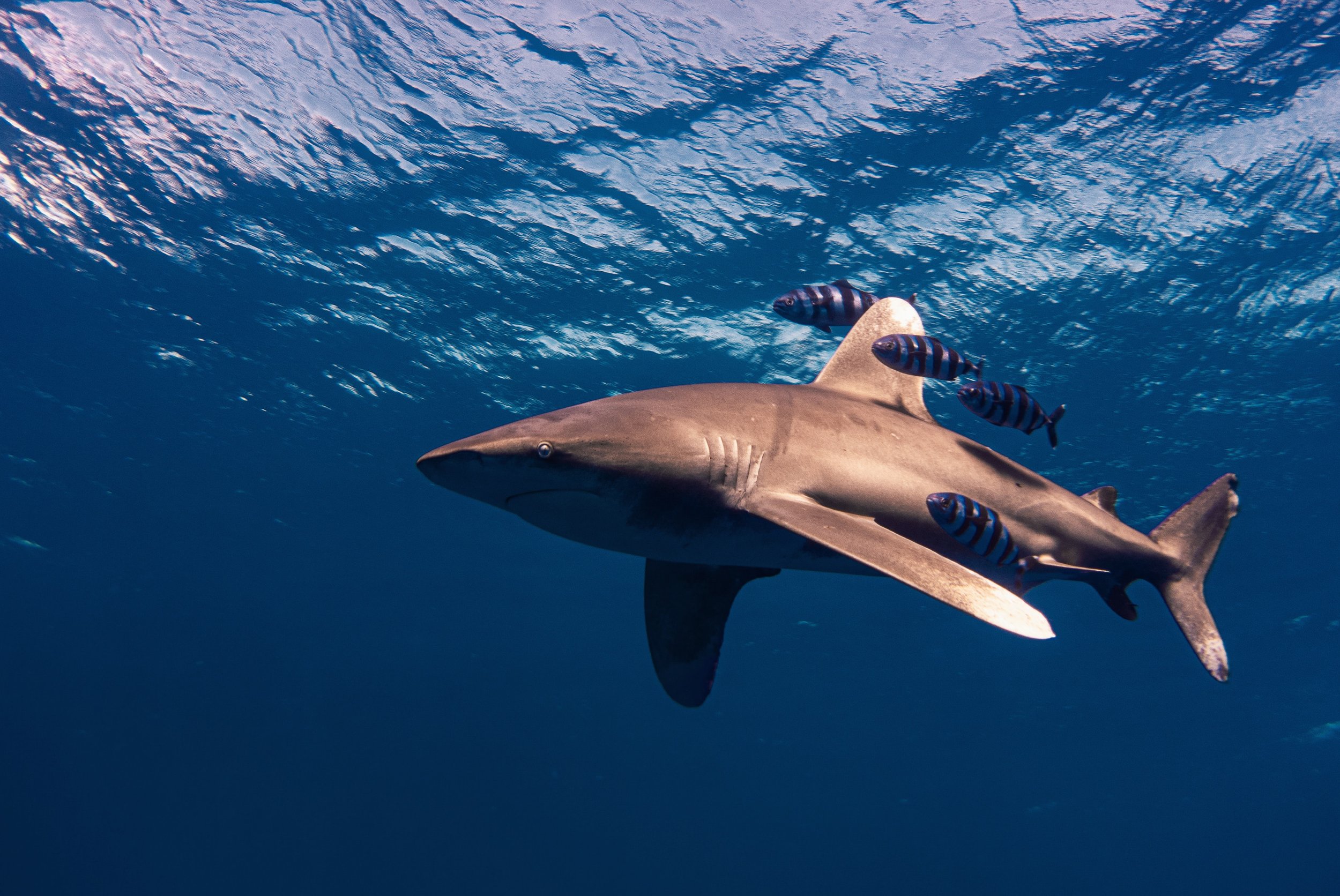The Problem With Shark Nets In Australia
Australia uses shark control equipment to catch and reduce the number of potentially dangerous sharks on its coastlines. These nets also pose a significant risk to other marine life, including endangered species.
The shark nets are designed to purposely trap sharks to reduce encounters with those of us who decide to enter the water.
In shallow areas, predominantly in Australia, shark nets keep swimming and surfing enthusiasts safe, but do they cause more harm than good?
Let’s learn more about these controversial nets and seek to further understand their purpose in our beautiful oceans.
How Do Shark Nets Work?
The primary purpose of shark nets is to catch sharks to reduce their numbers in beach areas. They are most commonly used in Australia along the east coast, where they were first introduced in New South Wales in 1937.
The nets are usually 150 m in length, 6 m high, and are set in approximately 10-12 m of water, 500 meters out to sea, and parallel to the shore. Therefore they do not entirely reduce the risk of shark attacks. However, the nets are checked by government contractors for both sharks and non-target species like dolphins, whales, rays, and turtles.
If small sharks are caught in the nets, they are released, but if they are big and still alive (usually they die from starvation or exhaustion, or both), they are euthanised.
"A lot of people mistakenly think it's a shark enclosure, that the beach is enclosed, but that's not the case. It's difficult to determine their effectiveness with any great certainty because to do that you'd actually need to be putting people at risk."
Dr McPhee - Bond University
How Do Drumlines Work?
Firstly, Queensland alone has almost 400 drumlines.
Drumlines are large baited hooks that hang underwater on a chain attached to a surface buoy.
They are only successful during times of the day when sharks actively hunt for food.
They aim to catch sharks, killing them with baited hooks in their territory. If the sharks are found alive, they are euthanised by Agriculture & Fisheries contractors. Sharks are often killed in one of two ways; stabbing them in the head or shooting them. There is nothing ethical about this practice.
Drumlines:
There are two kinds of Drumlines:
Standard Drums: These have to be regularly checked, making them less efficient than SMART Drums; contractors never know when a shark or something else is on the line until they go out to check them.
SMART Drums: These send instant alerts when a shark (or something else) has taken the bait. This allows a quick response to the drumline. However, they are expensive to access and maintain.
Are Shark Nets Successful?
Shark control programs that include netting beaches have successfully reduced shark attacks at some protected beaches in Australia, where sharks are known to swim close to shore.
To succeed, nets have to be far enough out so that people surfing do not become entangled. This means placing them beyond the surf break.
Between 1900 and 1937, there were 13 fatalities caused by sharks. The following 72 years saw an improvement with only eight deaths, only one of which occurred at a beach with a shark net.
We can look at statistics from the Australian Marine Conservation Society (MCS) to compare the effectiveness of shark nets and SMART drumlines on target sharks (great whites, tiger, and bull sharks) and non-target species.
Common Misconceptions With Shark Nets
They create a physical barrier.
Sharks avoid the nets.
Killing sharks in nets is a good thing.
Attacks would increase without nets.
All sharks are dangerous to humans.
Nets are not a threat to endangered sharks.
Why Shark Netting Beaches Are Bad
It is estimated that over 100,000 sharks have been killed through beach netting programmes; this number doesn’t include bycatch.
Here are just some of the incidents that occurred over one year in shark nets that run from Newcastle to Wollongong:
40 out of 375 marine animals found dead or alive in the nets were the target species: great white, bull, and tiger sharks.
The nets caught 95 southern eagle rays (IUCN Red List: Vulnerable).
The nets caught 60 smooth hammerheads (IUCN Red List: Vulnerable).
The nets caught 38 copper sharks (IUCN Red List: Vulnerable).
A further 5 dolphins were found dead.
A fur seal was found trapped in the nets at Bondi Beach.
12 of the 18 sea turtles caught were found dead, including an Olive Ridley sea turtle which is also “Vulnerable”, according to the IUCN Red List.
54 humpback whales have also been caught in the shark nets.
A dead turtle is caught every twenty days in the shark nets.
Between 2018 and 2019, 94% of catches were bycatch, including grey nurse sharks, which are critically endangered.
What Are The Alternatives?
With technological advances, we no longer need to net beaches if we have the right funding.
New South Wales has introduced drone surveillance and SMART drumlines, which have proven successful.
According to the Humane Society International Australia and the Australian MCS, these alternative beach protection strategies are more appropriate.
The indiscriminate deaths that occur as a result of the outdated Shark Meshing Program in NSW must end. The technology is nearly 100 years old, we would never accept safety technology that old in any other facet of our lives, why should ocean safety be any different?”HSIA Marine Biologist Lawrence Chlebeck
As a marine biologist myself, I have to agree with Chlebeck. We live in the 21st century, and with so many marine organisms on the brink of extinction, including many sharks, why are we harming marine life by netting beaches?
It is we who choose to enter their environment. Removing shark nets from beaches remains very difficult due to ongoing politics surrounding the issue - it is often referred to as the decade-old debate in Australia.
In recent months, conservation groups have been working to bring the topic into the spotlight again, noting that the shark net programs are not what the public perceives them to be. A recent fatal shark attack on the Gold Coast in 2020 occurred in a location with 8 drumlines and 1 shark net.
The Future Of Shark Nets In Australia
The Northern Beaches Council in Australia has voted to urge the government to stop shark nets at local beaches.
They are asking to shift to more effective ways to mitigate shark risks and animal-friendly technologies, including drones and shark listening stations.
This is after the DPI (Department of Primary) Fisheries found that 90% of species caught in nets are non-target.
Currently, in 2022, the push to remove shark nets is in the media spotlight again after critically endangered great hammerheads were caught and killed by shark nets and many vulnerable green turtles. In fact, recent reports show that over 325 non-target species were caught in shark nets between 2021-2022.
Are Shark Nets Used In Other Destinations?
As of 2018, shark nets are only currently used in New South Wales, Queensland, Australia and KwaZulu-Natal (KZN), South Africa.
In South Africa, 37 beaches use shark nets and baited drumlines. These spread over 300 km (190 miles) north and south of Durban.
According to the publically-funded KZN sharks board, in the last 67 years, not even one lethal shark encounter has been reported in protected areas. However, scientists in the area believe regardless of the nets, sharks in that area rarely target and strike humans.
The Humpback Whale Migration
Believe it or not, around 40,000 whales have begun an important journey up Australia's East Coast along the humpback highway. They have set out on a 5000-kilometre migration path and are set to cross areas of the ocean lined with shark nets in Queensland waters.
Please visit Sea Shepherd Australia to help send an email to the Queensland Minister for Fisheries asking to replace the current shark net program with modern, non-lethal shark bite mitigation measures.
How Can I Help?
Sign petitions against shark nets & drumlines such as this one over at Change
Write to your local MP expressing your concerns. Encourage them to use modern shark deterrents like Ocean Guardian’s Shark Shield and Clever Buoy’s Shark Smart Buoys
Educate your friends and family on the truth about shark nets and drumlines
Raise awareness on social media and share this article to spread the word
Final Thoughts
Shark nets around the east coast of Australia trap 16 times more non-target species than the three targeted sharks (great whites, bull, and tiger sharks). This makes the use of shark nets questionable for improving human safety.
On top of overfishing, rising temperatures, and shifting ecosystems, shark nets and drumlines are likely to contribute to declining numbers of marine life, particularly in Australia and South Africa.
Jean Harris, from the South African conservation group, Wild Oceans, said that nets and drumlines also give swimmers and surfers a false sense of security and encourage people to believe sharks are dangerous. The future of marine conservation would be to switch to modern technology with a low impact on at-risk species.
About The Writer | Darby Bonner
Darby is a copywriter and the owner of Your Cup Of Sea, a website aiming to connect travel and ocean enthusiasts worldwide. Do you want to be a guest writer on her blog? Get in touch today and share your story as a guest writer. Follow her journey at @yourcupofsea_
Cansdale, D., & Sapwell, G. (2020, September 10). Are shark nets the best way to protect surfers and beachgoers in Queensland? ABC News. https://www.abc.net.au/news/2020-09-10/how-do-shark-nets-and-drum-lines-work-fatal-gold-coast-attack/12645488
Hannam, P. (2019, December 4). “We fear the very dramatic thing”: Shark nets found to be ineffective. The Sydney Morning Herald. https://www.smh.com.au/environment/conservation/shark-nets-found-to-be-ineffective-20191203-p53gen.html
Lyons, E. (2021, April 28). Northern Beaches Council votes to remove shark nets after disturbing pictures emerge. News.Com.Au. https://www.news.com.au/technology/environment/northern-beaches-council-votes-to-remove-shark-nets-after-disturbing-pictures-emerge/news-story/78b6a9f0e0ac004501e265fee3a396a5
Manning, J. (2020, September 1). Conservation groups question why deadly shark nets are returning to NSW beaches today not SMART drumlines. Australian Marine Conservation Society. https://www.marineconservation.org.au/conservation-groups-question-why-deadly-shark-nets-are-returning-to-nsw-beaches-today-not-smart-drumlines/
Save Our Sharks - Shark nets. (2020). Save Our Sharks. http://www.saveoursharks.com.au/shark-nets.html
Vermaak, M., & Demaison, A. (2021, January 13). High cost to wildlife from shark nets protecting S.Africa beaches. Physical.Org. https://phys.org/news/2021-01-high-wildlife-shark-nets-safrica.html
What is the purpose of shark nets? (2020, December 24). CSIRO. https://www.csiro.au/en/research/animals/marine-life/sharks/what-is-the-purpose-of-shark-nets
https://www.abc.net.au/news/2020-09-09/shark-attack-gold-coast-greenmount-nick-slater/12643548

